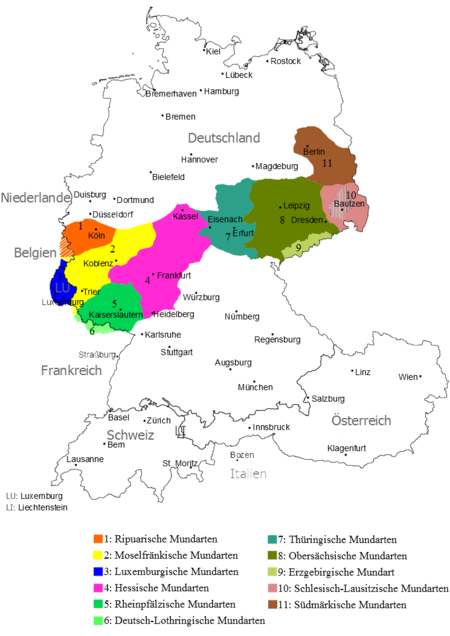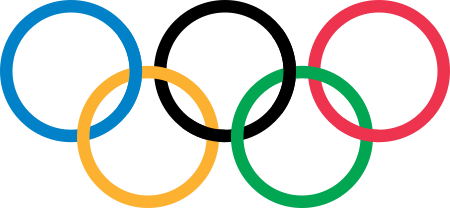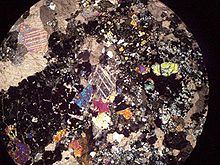Skarn
|
Read other articles:

この項目には、一部のコンピュータや閲覧ソフトで表示できない文字が含まれています(詳細)。 数字の大字(だいじ)は、漢数字の一種。通常用いる単純な字形の漢数字(小字)の代わりに同じ音の別の漢字を用いるものである。 概要 壱万円日本銀行券(「壱」が大字) 弐千円日本銀行券(「弐」が大字) 漢数字には「一」「二」「三」と続く小字と、「壱」「弐」…

Министерство природных ресурсов и экологии Российской Федерациисокращённо: Минприроды России Общая информация Страна Россия Юрисдикция Россия Дата создания 12 мая 2008 Предшественники Министерство природных ресурсов Российской Федерации (1996—1998)Министерство охраны о…

New Zealand author (1924–2004) Janet FrameONZ CBEFrame in 1993BornJanet Paterson Frame(1924-08-28)28 August 1924Dunedin, New ZealandDied29 January 2004(2004-01-29) (aged 79)Dunedin, New ZealandOccupationNovelist, short story writer, essayist, poetLanguageEnglishGenreModernism, magic realism, postmodernismNotable worksAn Angel at My TableWebsitejanetframe.org.nz Janet Paterson Frame ONZ CBE (28 August 1924 – 29 January 2004) was a New Zealand author. She is internationally renown…

Saint-Aubin-du-Cormiercomune Saint-Aubin-du-Cormier – Veduta LocalizzazioneStato Francia Regione Bretagna Dipartimento Ille-et-Vilaine ArrondissementFougères CantoneFougères-1 TerritorioCoordinate48°16′N 1°24′W / 48.266667°N 1.4°W48.266667; -1.4 (Saint-Aubin-du-Cormier)Coordinate: 48°16′N 1°24′W / 48.266667°N 1.4°W48.266667; -1.4 (Saint-Aubin-du-Cormier) Superficie27,57 km² Abitanti3 756[1] (2009) Densità13…

Halaman ini berisi artikel tentang surat kabar A.S.. Untuk gedung yang kadang dijuluki The Onion, lihat City Hall, London. Untuk kegunaan lain, lihat Onion (disambiguasi). The OnionTipeSurat kabar satireFormatSitus webPemilikG/O Media Inc.PendiriTim KeckChristopher JohnsonRedaksiChad NackersDidirikan29 Agustus 1988; 35 tahun lalu (1988-08-29)Madison, Wisconsin, A.S.[1]Berhenti publikasi2013 (cetak)PusatChicago, Illinois, A.S.Situs webwww.theonion.com Onion, Inc.JenisAnak perusahaanI…

King of England from 1483 to 1485 Richard III redirects here. For other uses, see Richard III (disambiguation). Richard of Gloucester redirects here. For other uses, see Richard of Gloucester (disambiguation). Richard IIIEarliest surviving portrait, c. 1520King of England (more...) Reign26 June 1483 – 22 August 1485Coronation6 July 1483PredecessorEdward VSuccessorHenry VIIBorn2 October 1452Fotheringhay Castle, Northamptonshire, EnglandDied22 August 1485 (aged 32)Bosworth Field, Leic…
2020年夏季奥林匹克运动会波兰代表團波兰国旗IOC編碼POLNOC波蘭奧林匹克委員會網站olimpijski.pl(英文)(波兰文)2020年夏季奥林匹克运动会(東京)2021年7月23日至8月8日(受2019冠状病毒病疫情影响推迟,但仍保留原定名称)運動員206參賽項目24个大项旗手开幕式:帕维尔·科热尼奥夫斯基(游泳)和马娅·沃什乔夫斯卡(自行车)[1]闭幕式:卡罗利娜·纳亚(皮划艇)[2…

Former Irish broadcasting regulator Broadcasting Authority of IrelandÚdarás Craolacháin na hÉireannState Agency overviewFormed1 October 2009 (2009-10-01)Preceding agenciesBroadcasting Commission of IrelandBroadcasting Complaints CommissionDissolved15 March 2023 (2023-03-15)Superseding agencyCoimisiún na MeánJurisdictionIrelandHeadquarters2–5 Warrington Place, Dublin 2, D02 XP29State Agency executiveDr Pauric Travers, ChairmanKey documentBroadcasting Act 2009…

Saint-Pierre-dels-Forcats Blason Administration Pays France Région Occitanie Département Pyrénées-Orientales Arrondissement Prades Intercommunalité Communauté de communes Pyrénées catalanes Maire Mandat Pierre Blanqué 2020-2026 Code postal 66210 Code commune 66188 Démographie Populationmunicipale 261 hab. (2021 ) Densité 20 hab./km2 Géographie Coordonnées 42° 29′ 44″ nord, 2° 07′ 09″ est Altitude Min. 1 320 mMax. 2 750…

Region of Auckland, New Zealand Place in North Island, New ZealandWest AucklandMetropolitan West Auckland captured by a Planet Labs satellite in 2016West AucklandLocation in New ZealandCoordinates: 36°48′S 174°36′E / 36.8°S 174.6°E / -36.8; 174.6CountryNew ZealandIslandNorth IslandRegionAuckland RegionGovernment • MPsCameron Brewer (National)Carlos Cheung (National)Paulo Garcia (National)Carmel Sepuloni (Labour)Phil Twyford (Labour)Time zoneUTC+12 (NZS…

Kherlanji Dalit massacre Khairlanji massacreDate29 September 2006LocationKherlanji located in the Bhandara districtCauseRevenge, CasteismDeaths4ChargesSlaughtering The Khairlanji massacre (or Kherlanji massacre) was the murder of four Scheduled Caste citizens by villagers of Khairlanji on 29 September 2006.[1][2] The killings took place in the small Indian village of Khairlanji (Kherlanji), located in the Bhandara district of the state of Maharashtra. History Part of a series onD…

Wareng bintang Gmelina philippensis Status konservasiRisiko rendahIUCN139796277 TaksonomiDivisiTracheophytaSubdivisiSpermatophytesKladAngiospermaeKladmesangiospermsKladeudicotsKladcore eudicotsKladasteridsKladlamiidsOrdoLamialesFamiliLamiaceaeSubfamiliViticoideaeGenusGmelinaSpesiesGmelina philippensis Chamisso, 1832 lbs Gmelina philippensis [1] atau wareng bintang merupakan spesies tumbuhan dalam famili Lamiaceae (tetapi sebelumnya ditempatkan pada Verbenaceae). [2] Tidak ada sub…

This article needs to be updated. Please help update this article to reflect recent events or newly available information. (December 2020) American Memory is an internet-based archive for public domain image resources, as well as audio, video, and archived Web content. Published by the Library of Congress, the archive launched on October 13, 1994, after $13 million was raised in private donations.[1] History The pilot for the American Memory project was a digitization program which start…

Baseball park in Brooklyn, New York, US Capitoline GroundsCapitoline GroundsLocation within New York CityShow map of New York CityCapitoline GroundsCapitoline Grounds (New York)Show map of New YorkLocationBrooklyn, New YorkCoordinates40°40′58″N 073°56′55″W / 40.68278°N 73.94861°W / 40.68278; -73.94861[1]OwnerReuben S. DeckerHamilton A. WeedCapacity5,000SurfaceGrassConstructionBroke ground1863Built1864OpenedMay 5, 1864Closed1880TenantsAtlantic of Brookl…

Racing sport using motorcycles This article has multiple issues. Please help improve it or discuss these issues on the talk page. (Learn how and when to remove these template messages) This article possibly contains original research. Please improve it by verifying the claims made and adding inline citations. Statements consisting only of original research should be removed. (April 2015) (Learn how and when to remove this message) This article needs additional citations for verification. Please …

Questa voce o sezione sull'argomento lingue non cita le fonti necessarie o quelle presenti sono insufficienti. Puoi migliorare questa voce aggiungendo citazioni da fonti attendibili secondo le linee guida sull'uso delle fonti. Segui i suggerimenti del progetto di riferimento. Tedesco centraleParlato in Germania Belgio (Comunità germanofona) Lussemburgoristrette aree di Francia e Paesi Bassi TassonomiaFilogenesiLingue indoeuropee Lingue germaniche Lingue germaniche occidenta…

هذه المقالة عن عبد الله بن عامر بن كريز. لمعانٍ أخرى، طالع عبد الله بن عامر (توضيح). عبد الله بن عامر بن كريز معلومات شخصية الميلاد 4 هـمكة الوفاة 58 هـالمدينة المنورة مواطنة الدولة الأموية الديانة الإسلام الأب عامر بن كريز الحياة العملية المهنة عسكري الخدمة ال�…

Sporting event delegationPanama at the1996 Summer OlympicsIOC codePANNOCComité Olímpico de PanamáWebsitewww.copanama.com (in Spanish)in AtlantaCompetitors7 in 6 sportsFlag bearer Eileen CoparropaMedals Gold 0 Silver 0 Bronze 0 Total 0 Summer Olympics appearances (overview)189619001904190819121920192419281932193619481952195619601964196819721976198019841988199219962000200420082012201620202024 Panama competed at the 1996 Summer Olympics, held in Atlanta, United States. Results by event…

This article needs additional citations for verification. Please help improve this article by adding citations to reliable sources. Unsourced material may be challenged and removed.Find sources: TDF Group – news · newspapers · books · scholar · JSTOR (June 2014) (Learn how and when to remove this message) TDF GroupIndustryRadio and television transmissionFounded6 January 1975 (1975-01-06)HeadquartersParis, FranceWebsiteTDF Website TDF tower…

Constitutional officer of Minnesota, United States State Auditor of MinnesotaIncumbentJulie Blahasince January 7, 2019StyleMister or Madam Auditor(informal)The Honorable(formal)Member ofExecutive Council, among othersSeatMinnesota State CapitolSaint Paul, MinnesotaAppointerGeneral electionTerm lengthFour years, no term limitsConstituting instrumentMinnesota Constitution of 1858, Article VInaugural holderWilliam F. DunbarFormationMay 11, 1858(166 years ago) (May 11, 1858)SalaryUS$108,48…

